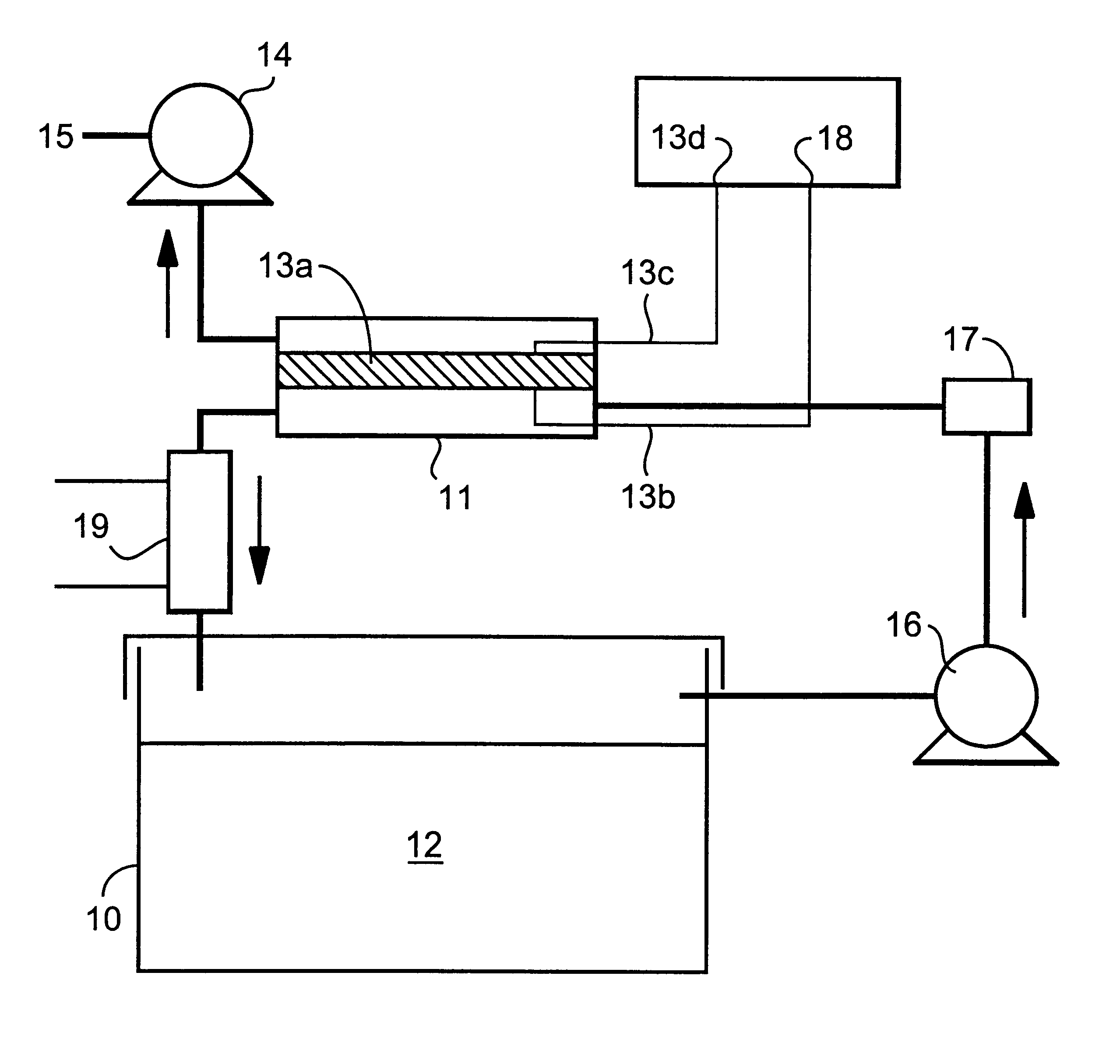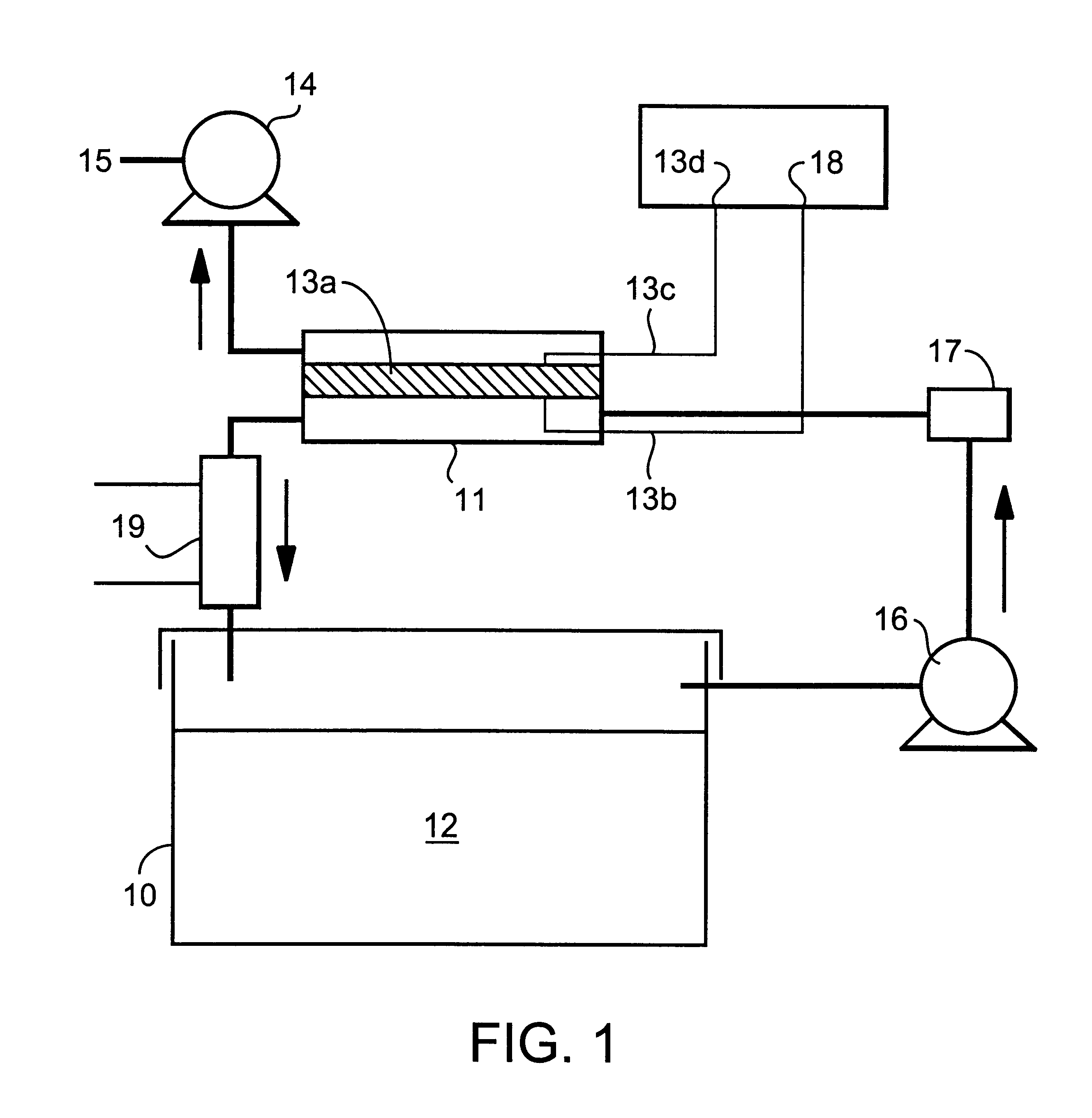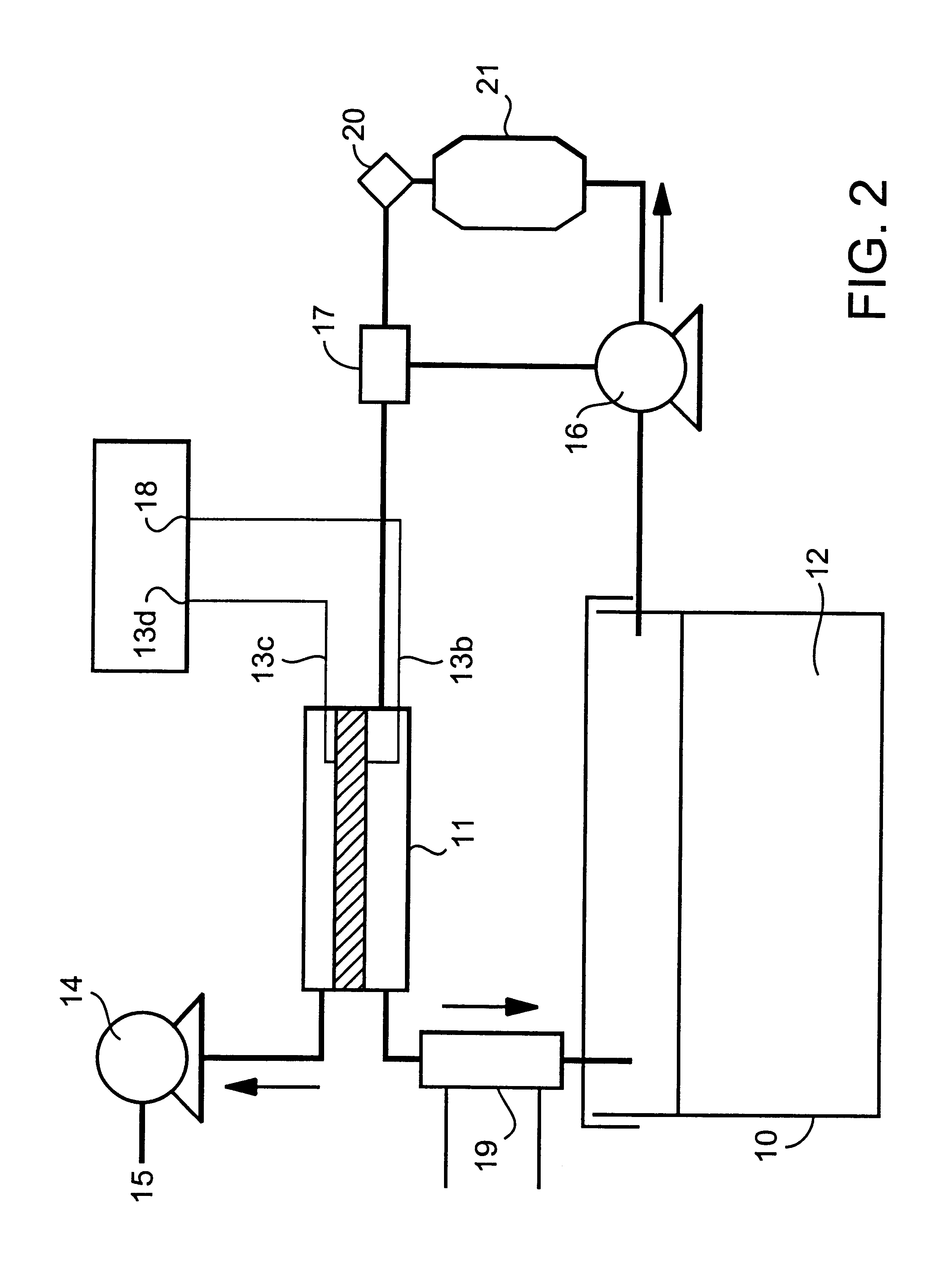Device for reducing the oxidation of food products
a technology for reducing the oxidation of food products and food products, which is applied in the direction of feeding apparatus, automatic control devices, food preservation, etc., can solve the problems of reducing the smoke point of oil baths, reducing the quality of their life, and oxidation of some of their components, so as to reduce or eliminate the detrimental effects of presen
- Summary
- Abstract
- Description
- Claims
- Application Information
AI Technical Summary
Benefits of technology
Problems solved by technology
Method used
Image
Examples
Embodiment Construction
The invention relates to a process for treating food products in order to reduce or eliminate the detrimental effects of the presence of oxygen in the atmosphere which is in contact with the external surface of the products. A non-zero quantity of oxygen is extracted from the atmosphere by implementing a solid electrolyte which is an O.sup.2- ion conductor and is essentially impermeable to the gases.
In the process as described above, the solid electrolyte is operated according to a purely electrochemical mechanism, generated by a current generator or according to an electrochemical semi-permeability process, generated by the oxygen partial pressure difference between each of the faces of the said electrolyte. In the case of a purely electrochemical mechanism, the solid electrolyte is in contact with two electrodes, respectively an anode and a cathode which are porous to the gases and are themselves connected to a current generator.
According to a first variant of the process as defin...
PUM
 Login to View More
Login to View More Abstract
Description
Claims
Application Information
 Login to View More
Login to View More - R&D
- Intellectual Property
- Life Sciences
- Materials
- Tech Scout
- Unparalleled Data Quality
- Higher Quality Content
- 60% Fewer Hallucinations
Browse by: Latest US Patents, China's latest patents, Technical Efficacy Thesaurus, Application Domain, Technology Topic, Popular Technical Reports.
© 2025 PatSnap. All rights reserved.Legal|Privacy policy|Modern Slavery Act Transparency Statement|Sitemap|About US| Contact US: help@patsnap.com



